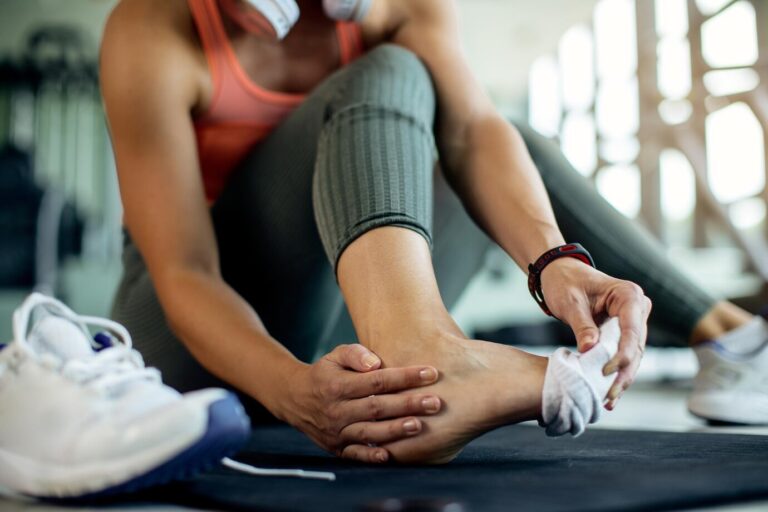Bunions are a common foot condition that can cause significant discomfort and affect overall foot health. Understanding what bunions are, their link to foot pain, and ways to alleviate discomfort is essential for those experiencing this condition.
What Are Bunions?
A bunion, medically known as hallux valgus, is a bony bump that forms at the base of the big toe, where it meets the foot. This abnormality develops when the big toe begins to lean toward the second toe, causing the joint to protrude outward. Over time, this misalignment can worsen, leading to increased discomfort and difficulty walking.
Symptoms of Bunions:
- A visible lump on the side of the big toe joint
- Swelling, redness, or soreness around the big toe
- Limited movement of the big toe
- Persistent or intermittent pain, especially after prolonged standing or walking
How Bunions Cause Foot Pain
The big toe joint’s irregular positioning creates abnormal pressure on the surrounding tissue and bones. This imbalance can lead to chronic pain, especially during weight-bearing activities. Bunions often cause ongoing swelling and irritation of the soft tissues around the joint. The repetitive pressure from shoes can exacerbate this inflammation, resulting in persistent discomfort. Without treatment, bunions can lead to other foot problems, such as calluses, hammertoes, or metatarsalgia (pain in the ball of the foot). These secondary issues can amplify and complicate the pain.
Other Parts of the Body Bunions May Affect
If left untreated, a bunion can cause pain in other parts of the body. Some areas include not being able to walk or stand for long periods due to pain. When your feet are not aligned, it may cause lower back pain due to your spine not being aligned. Bunions can also press against nerves, causing paresthesia or numbness in the foot.
Tips for Managing Bunion Pain
If you’re dealing with bunions, there are ways to manage the pain and discomfort effectively.
- Choose the Right Footwear: Opt for shoes with a wide toe box and cushioning to avoid extra pressure on the bunion. Avoid high heels or tight-fitting shoes, as these may worsen the condition.
- Utilize Orthotics or Padding: Orthotic devices and bunion pads provide extra support and cushioning to ease pressure on the affected joint. These tools can help reduce pain and improve alignment during movement.
- Apply Ice and Elevation: Ice packs can reduce inflammation, while elevating the foot can alleviate swelling. Use these techniques after prolonged activity to relieve discomfort.
- Physical Therapy and Stretching: Exercise and stretches targeting foot and toe muscles can improve flexibility and reduce stiffness caused by the bunion. Physical therapy may also help realign the joint over time.
- Consult a Healthcare Professional: If pain persists or worsens, seek advice from a podiatrist. They may recommend additional treatments such as medication, custom orthotics, or, in severe cases, surgery to correct the bunion.
Addressing Bunions Early
Taking action early can limit the progression of bunions and prevent severe discomfort. By paying attention to your symptoms and making proactive adjustments, you can maintain better mobility and reduce the associated pain. If you’re experiencing ongoing foot pain, don’t hesitate to reach out to a healthcare professional who can guide you toward the most effective treatments. With the right care, managing bunions and their impact on your daily life is entirely possible.

